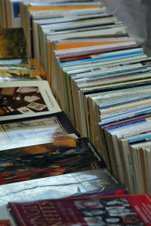The last time Kevork and Marta saw each other was in an Armenian orphanage in Marash, Turkey. Before they are separated, Kevork and Marta promise they will one day be reunited and marry.
Both Kevork and Marta survive, yet they are also sure the other is dead. They have experienced unspeakable acts, but the promise they made each other keeps them going when life feels unlivable. They hope for the unbelievable—that the other still lives—but also worry they themselves are too severely damaged for the other to still love.
Kevork and Marta are compelling characters, and the reader roots for their reunification. They are also surrounded by supporting characters that show humanity exists even in the most inhumane situations: German nuns, international aid workers, diplomats, and young children.
Daughter of War is written for a young audience and though it doesn’t shy from hard topics, it also doesn’t delve deeply into them either. However, it is a good introductory read into an often overlooked historical period.
Both Kevork and Marta survive, yet they are also sure the other is dead. They have experienced unspeakable acts, but the promise they made each other keeps them going when life feels unlivable. They hope for the unbelievable—that the other still lives—but also worry they themselves are too severely damaged for the other to still love.
Kevork and Marta are compelling characters, and the reader roots for their reunification. They are also surrounded by supporting characters that show humanity exists even in the most inhumane situations: German nuns, international aid workers, diplomats, and young children.
Daughter of War is written for a young audience and though it doesn’t shy from hard topics, it also doesn’t delve deeply into them either. However, it is a good introductory read into an often overlooked historical period.
